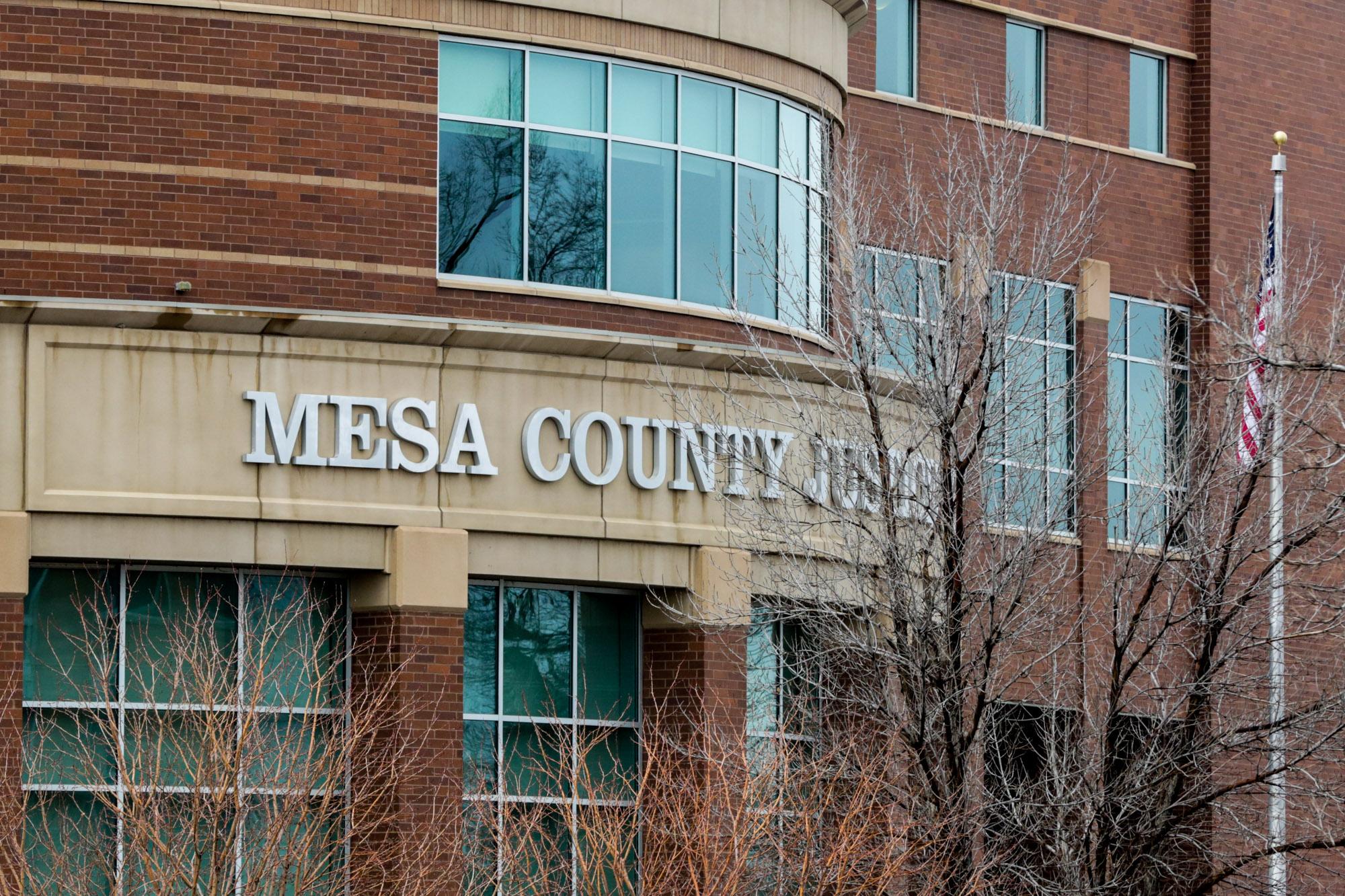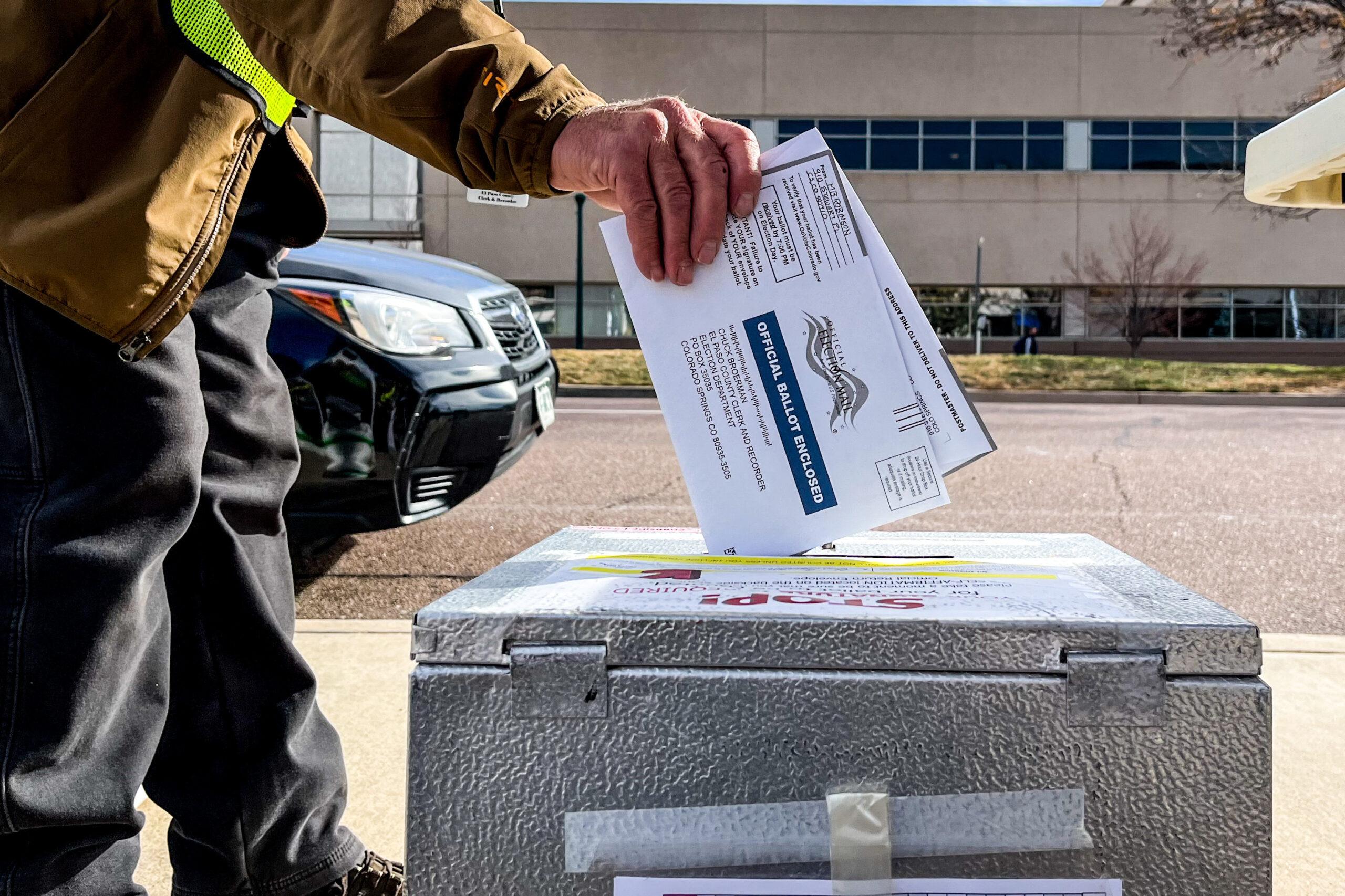
CPR is covering each day of the Peters' trial. You can read our explainer of the case here, and catch up on past days here.
Sandra Brown, the former back office elections manager for Mesa County, took the stand Wednesday, on the sixth day of the trial of former Mesa county clerk Tina Peters.
Brown is the first county staffer to testify about what exactly happened during a secure software update of the county’s voting machines in 2021. Months later, pictures taken secretly during that process were posted online, setting off a years-long investigation. Brown was in the room for the update, and in the clerk’s office two days earlier when someone not employed by the clerk’s office copied the machines’ hard drives.
Peters is facing ten charges, including identity theft and attempting to influence a public servant. Brown herself previously pled guilty to attempting to influence a public servant, a felony, and a misdemeanor count of official misconduct. She paid a fine, was sentenced to 30 days in jail, 100 hours of community service and two years of probation. Brown was also required to testify against Peters.
Her goal Wednesday was “to come in here and tell the truth,” Brown told the prosecution on the witness stand.
Brown said that on Sunday, May 23, 2021, two days before the software update, Peters asked Brown to come in while the office was closed. There she met Peters and another man, who was introduced to her as a new hire.
“He was supposed to be busy doing onboarding on Monday,” Brown said she was told. “So I was supposed to show him around the department, show him the equipment and everything on Sunday so that he could be a part of the trusted build on Tuesday.”
Brown said Peters introduced the supposed new employee as Gerald Wood and told her “he's going to be coming on and training as your backup.”
She said the man introduced himself as Jerry, but she became suspicious of his identity because of a few strange comments she overheard.
“They were talking about images and if they were able to do forensic images on the systems in Arizona, and then they were talking about Antrim County. So it seemed a little questionable, but I didn't know what kind of background he had.”
Both the state of Arizona and Antrim County, Michigan, were places where conservative activists attempted to find proof of voting irregularities. Neither effort turned up valid evidence.
A few days later, Brown said, she asked Peters where Jerry was and was told he wasn’t going to work out as an employee. She said that was the last she knew about him until the leak of Mesa County’s passwords.
Prosecutors are building the case that the man Brown met was actually Conan Hayes, a self-described data expert from California who they say gained access to county equipment with Peters’ help and while using Wood’s stolen identity.
Peters “lied to me,” Brown told the court.
On that Sunday Peters asked the man a lot of technical questions, according to Brown.
“One of them was if he knew how to do a forensic image, and he said yes, that he did.”
Brown said when the man went to his car to get an external harddrive and a device to connect to the machine and capture an image, she started to get a little “leery” about what was happening.
“Because I knew that by doing that, he was breaking our contract with Dominion Voting Systems. If everything's not followed to a T and you plug foreign stuff into the server, it voids the trusted build and breaks the contract on the equipment,” she explained.
The man was also there during the software update the following Tuesday, Brown said, and was introduced to staff from Dominion Voting Systems and the Secretary of State’s office as Gerald Wood.
Brown said a few weeks after the update, she learned by accident that someone had taken photos during the update, which is supposed to be a highly secure process, but she didn’t report the incident to anyone.
“Tina was going through some pictures and stuff on her phone, looking for some stuff to show me for something else, and I saw that there were some pictures that were from the trusted build,” Brown said.
Two months later, Brown said, both women were in the office on the day in August when Peters discovered passwords and images from the update had been posted online. Peters called Brown and said “I’m F—d.” (Peters apparently said the same thing to another member of her staff after the photos came out.)
Brown remembered walking over to Peters’ office.
“I just kind of said, ‘well, how did those end up on the internet?’”
Brown didn’t testify to what Peters’ response was, just that she had more conversations with Peters after that about the trouble the images could cause. She said a local political activist, Sherronna Bishop, who has been involved in efforts to undermine the 2020 election, was also part of those calls.
Earlier in the trial Judge Matthew Barrett referred to Bishop as an unindicted co-conspirator. She is not facing any charges at this point.
Brown said after the images were posted online Peters and Bishop told her to get a burner phone and said that they should only communicate with each other on the encrypted messaging app Signal, because they were likely being monitored. After the state started investigating the security breach, Brown said Bishop called her and told her to remove the voting machine’s server. Brown said she wasn’t touching any of the equipment because it was part of an investigation.
“Because that would be stupid. I mean, the Secretary of State had already come in. They had already looked through the machines and I was told that the district attorney was working on getting a search warrant,” she said.
Peters’ then deputy Belinda Knisley was in the room with Brown, listening to the call with Bishop on speaker phone.
“I muted the phone and I told her, ‘you're not touching that stuff. If you do, you're going to catch a felony,’” Brown recalled.
Knisley also later pled guilty for her role in the security breach and has cooperated with prosecutors. She wrapped up her second day of testimony earlier on Wednesday.
The trial is past the halfway point, but Judge Barrett noted it’s been slow going and appears to be falling behind schedule. The prosecution said it plans to bring forward two more witnesses, and then the defense will present its case. Barrett said he still hoped to wrap up arguments by this coming Monday, but warned jurors they should plan to be in court on Tuesday, just in case.
Later, after the jury left the courtroom, he told the attorneys that both sides have been asking a lot of questions that simply “don't advance the ball.”
“It's up to you all how you try your case, (the) questions you ask. But we're getting pretty far behind and I think there are a lot of opportunities for the parties to kind of cut out some of those things that don't get this case moving in a direction that's towards a resolution quickly enough,” he told them.
- Tina Peters Trial Day 1 — Attorneys deliver contrasting narratives of former Mesa County Clerk’s handling of election equipment
- Tina Peters Trial Day 2 — The former Mesa County Clerk heard blasting the Secretary of State’s Office in recording
- Tina Peters Trial Day 3 — Man at core of identity theft allegations tells his story
- Tina Peters Trial Day 4 — A secret recording of a fateful meeting
- Tina Peters Trial Day 5 — ‘I’m F—ed’: Former deputy clerk testifies







